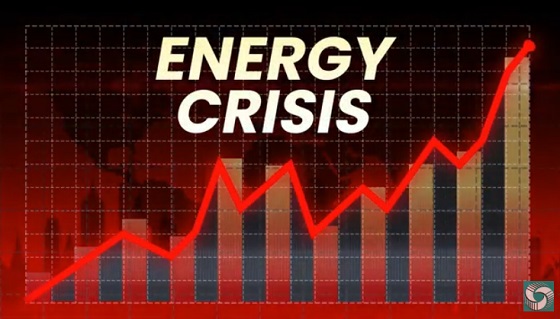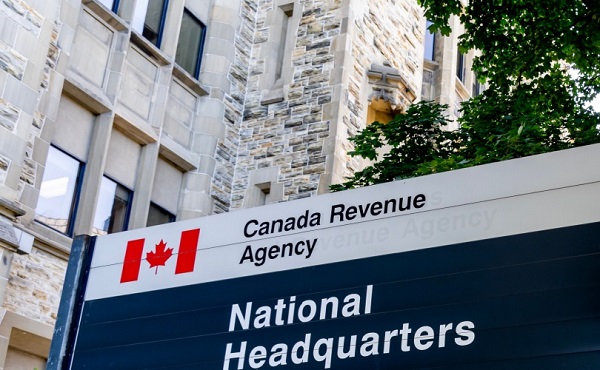Energy
OPEC Delivers Masterful Rebuke To Global Energy Agency Head


From the Daily Caller News Foundation
By
Some readers will remember the infamous May 2021 report from the International Energy Agency (IEA) titled ‘Net Zero by 2050: A Roadmap for the Global Energy Sector.’ The report projected a roadmap for transforming the world’s $300 trillion oil-and-coal-based energy system into one that runs on unreliable, intermittent alternatives like wind and solar.
Most educated observers viewed the report as a piece of propaganda coming from an agency then in the process of transforming itself from a historically reliable source of real data and analysis into just another advocate for the climate alarm narrative. It surprised no one when, just a few years later, Fatih Birol, head of the IEA, publicly boasted about that exact transformation as being the agency’s overt mission now.
One passage in the report’s set of recommendations immediately caught everyone’s eye due to its boldness and transparent illogic. That passage says, “There is no need for investment in new fossil fuel supply in our net zero pathway.”
To reinforce this stunningly absurd notion, Birol, in an interview published by the Guardian upon the study’s release, insisted that, ”If governments are serious about the climate crisis, there can be no new investments in oil, gas and coal, from now – from this year.”
It was a moment when the formerly respected agency shed a great deal of its credibility.
Making matters worse for Birol and IEA, barely a month later a spokesperson for the IEA urged OPEC to “open the spigots” to raise oil production to meet rising global demand that was outstripping the agency’s forecasts as the world recovered from the COVID-19 insanity. Three months after that, Wood MacKenzie, Rystad, and Moody’s had all issued studies directly contradicting IEA’s absurd assessment, and Birol was joining former President Joe Biden in calling for U.S. oil producers to drill more wells and produce more oil.
This sort of ill-advised posturing and self-contradiction is what happens when a scholarly enterprise consciously lurches into advocacy.
At this past week’s CERAWeek conference in Houston, Birol contradicted himself one more time, telling attendees, “I want to make it clear … there would be a need for investment, especially to address the decline in the existing fields. There is a need for oil and gas upstream investments, full stop.”
This latest impulse to respond to the next new thing surely surprised no one. But it was a bridge too far for officials at OPEC to sit by and absorb silently. In a March 13 statement posted on the OPEC website, the cartel reviewed Birol’s and IEA’s recent history of inconsistency and urged Birol to take a step back and consider the impacts it has had and will continue to have on investments for the future.
“Aside from the risk of whiplash that such severe yo-yoing between positions could cause, a serious point needs to be stressed,” OPEC writes. “The world needs unambiguous clarity on the realities of the future of supply and demand. Agencies that recognize the responsibility that comes from offering analysis of the long-term perspectives of the industry should not be shifting positions or mixing messages and narratives every couple of years on this matter, particularly ones that were founded to ensure the security of oil supplies.”
Oof. Blunt, but true. It is a dressing down that is well-deserved and long overdue.
Does Birol’s latest shift signal a recognition that the energy transition for which it has advocated has failed? It’s hard to know.
Regardless, once an agency like IEA makes a public decision to transform itself away from sterile analysis into the realm of advocacy, going back will be hard. Aside from the loss of credibility, which has only increased as Birol has lurched from one position to another and back again, such a transformation completely shifts the organization’s culture. Going back now will require time and a great deal of organizational pain.
Here, another obvious question arises: Is Fatih Birol the right person for this job? It is a question that should have arisen before the loss of so much credibility and trust. For the 32 member countries who subscribe to the agency and pay its bills, there is no time like the present to determine the answer.
David Blackmon is an energy writer and consultant based in Texas. He spent 40 years in the oil and gas business, where he specialized in public policy and communications.
Energy
Federal Clean Power Plan Risks Blackouts And Higher Bills

From the Frontier Centre for Public Policy
Ottawa’s Clean Electricity Regulations could derail Canada’s energy future. Here’s what we need to do
The federal government’s push to make Canada’s electricity system net-zero is running straight into reality—and it’s not pretty.
Through the Clean Electricity Regulations (CER), the government wants all provinces to eliminate greenhouse gas emissions from electricity generation by 2035. It is an ambitious goal, but one that ignores a basic fact: demand for electricity is exploding, and provinces are struggling to keep up.
New technologies like artificial intelligence are supercharging this demand. AI systems, including tools such as ChatGPT, rely on massive data centres—huge warehouses of computer servers that need constant cooling and enormous amounts of electricity to function. According to a recent Royal Bank of Canada report, if all proposed data centre projects in Canada move ahead, they would consume 14 per cent of the country’s entire electricity supply by 2030. That is roughly the same as projections in the United States, where data centres are expected to use up to 15 per cent of the national total.
This is a serious problem. Provinces such as Alberta and Saskatchewan have already raised the alarm, arguing that the federal regulations overstep Ottawa’s constitutional authority. Energy supply, like natural resources, has traditionally been under provincial control. Alberta and Ontario operate their own electricity markets to attract investment and ensure reliability. Federal regulations threaten to undermine these efforts, adding risk and driving up costs.
The situation is already tense. Alberta, for example, issued multiple grid alerts in 2024 due to shortages and market disruptions. The province is now looking at “behind-the-fence” power solutions, encouraging data centres to generate their own electricity to guarantee stability.
Canada was not always in this bind. For decades, we enjoyed an abundance of clean, affordable hydroelectric power. Provinces like Quebec, British Columbia, Manitoba and Newfoundland and Labrador built massive hydro projects starting in the 1960s, creating cheap power and even surpluses to export to U.S. markets. In 2022, for example, B.C. sent 74 per cent of its exported power to the U.S., while Quebec sent 63 per cent and Ontario an impressive 81 per cent, generating billions in revenue.
But that era is coming to an end. Most of the best sites for hydro dams have already been developed. New projects would require expensive, long-distance transmission lines to bring power from remote areas to the cities that need it. On top of that, growing environmental concerns make new dam construction an uphill battle.
The truth is, there is no quick fix. A 2025 study by the Fraser Institute paints a grim picture: to meet future electricity demand solely with solar power would require 1,680 years of construction. Wind power? About 1,150 years. Even hydro would take close to a millennium. Even if we combined these sources, we are still looking at more than 1,000 years to build enough capacity.
Meanwhile, federal projections estimate that Canada’s electricity demand will double by 2050.
Without significant policy changes, Canadians could soon face the worst of both worlds: soaring electricity bills and the threat of power shortages. Our economy could also suffer as companies and data centres look to other jurisdictions with more reliable power supplies.
So what should Canada do? Here are three practical steps:
- Scrap the Clean Electricity Regulations. Provinces like Alberta and Saskatchewan are already committed to reaching net-zero by 2050. Federal interference only creates unnecessary political battles and delays investments.
- Fast-track approvals for new interprovincial transmission lines. Today, building a new transmission line can take more than a decade. Speeding up this process would help provinces share power and avoid costly overbuilding of generation capacity.
- Launch a major low-interest loan program to build new power infrastructure. We need to dramatically expand our generation and transmission systems, including natural gas-fired plants, to meet future demand.
Canadians deserve a reliable, affordable and clean energy future. But we will not get there by ignoring the realities of rising demand and provincial responsibilities. It is time for the federal government to listen to the provinces, embrace practical solutions and avoid an avoidable crisis.
Otherwise, we are on track for blackouts, higher bills and missed economic opportunities.
Maureen McCall is an energy business analyst and Fellow at the Frontier Center for Public Policy. She writes on energy issues for EnergyNow and the BOE Report. She has 20 years of experience as a business analyst for national and international energy companies in Canada.
Economy
The Net-Zero Dream Is Unravelling And The Consequences Are Global

From the Frontier Centre for Public Policy
The grand net-zero vision is fading as financial giants withdraw from global climate alliances
In recent years, governments and Financial institutions worldwide have committed to the goal of “net zero”—cutting greenhouse gas emissions to as close to zero as possible by 2050. One of the most prominent initiatives, the Glasgow Financial Alliance for Net Zero (GFANZ), sought to mobilize trillions of dollars by shifting investment away from fossil fuels and toward green energy projects.
The idea was simple in principle: make climate action a core part of financial decision-making worldwide.
The vision of a net-zero future, once championed as an inevitable path to global prosperity and environmental sustainability, is faltering. What began as an ambitious effort to embed climate goals into the flow of international capital is now encountering hard economic and political realities.
By redefining financial risk to include climate considerations, GFANZ aimed to steer financial institutions toward supporting a large-scale energy transition.
Banks and investors were encouraged to treat climate-related risks—such as the future decline of fossil fuels—as central to their financial strategies.
But the practical challenges of this approach have become increasingly clear.
Many of the green energy projects promoted under the net-zero banner have proven financially precarious without substantial government subsidies. Wind and solar technologies often rely on public funding and incentives to stay competitive. Energy storage and infrastructure upgrades, critical to supporting renewable energy, have also required massive financial support from taxpayers.
At the same time, institutions that initially embraced net-zero commitments are now facing soaring compliance costs, legal uncertainties and growing political resistance, particularly in major economies.
Major banks such as JPMorgan Chase, Citigroup and Goldman Sachs have withdrawn from GFANZ, citing concerns over operational risks and conflicting fuduciary duties. Their departure marks a signifcant blow to the alliance and signals a broader reassessment of climate finance strategies.
For many institutions, the initial hope that governments and markets would align smoothly around net-zero targets has given way to concerns over financial instability and competitive disadvantage. But that optimism has faded.
What once appeared to be a globally co-ordinated movement is fracturing. The early momentum behind net-zero policies was fuelled by optimism that government incentives and public support would ease the transition. But as energy prices climb and affordability concerns grow, public opinion has become noticeably more cautious.
Consumers facing higher heating bills and fuel costs are beginning to question the personal price of aggressive climate action.
Voters are increasingly asking whether these policies are delivering tangible benefits to their daily lives. They see rising costs in transportation, food production and home energy use and are wondering whether the promised green transition is worth the economic strain.
This moment of reckoning offers a crucial lesson: while environmental goals remain important, they must be pursued in balance with economic realities and the need for reliable energy supplies. A durable transition requires market-based solutions, technological innovation and policies that respect the complex needs of modern economies.
Climate progress will not succeed if it comes at the expense of basic affordability and economic stability.
Rather than abandoning climate objectives altogether, many countries and industries are recalibrating, moving away from rigid frameworks in favour of more pragmatic, adaptable strategies. Flexibility is becoming essential as governments seek to maintain public support while still advancing long term environmental goals.
The unwinding of GFANZ underscores the risks of over-centralized approaches to climate policy. Ambitious global visions must be grounded in reality, or they risk becoming liabilities rather than solutions. Co-ordinated international action remains important, but it must leave room for local realities and diverse economic circumstances.
As the world adjusts course, Canada and other energy-producing nations face a clear choice: continue down an economically restrictive path or embrace a balanced strategy that safeguards both prosperity and environmental stewardship. For countries like Canada, where natural resources remain a cornerstone of the economy, the stakes could not be higher.
The collapse of the net-zero consensus is not an end to climate action, but it is a wake-up call. The future will belong to those who learn from this moment and pursue practical, sustainable paths forward. A balanced approach that integrates environmental responsibility with economic pragmatism offers the best hope for lasting progress.
Marco Navarro-Genie is the vice president of research at the Frontier Centre for Public Policy. With Barry Cooper, he is coauthor of Canada’s COVID: The Story of a Pandemic Moral Panic (2023).
-

 COVID-192 days ago
COVID-192 days agoChris Barber asks Court to stay proceedings against him
-

 Energy2 days ago
Energy2 days agoStraits of Mackinac Tunnel for Line 5 Pipeline to get “accelerated review”: US Army Corps of Engineers
-

 Canadian Energy Centre2 days ago
Canadian Energy Centre2 days agoFirst Nations in Manitoba pushing for LNG exports from Hudson’s Bay
-

 Opinion2 days ago
Opinion2 days agoLeft Turn: How Viet Nam War Resisters Changed Canada’s Political Compass
-

 John Stossel2 days ago
John Stossel2 days agoClimate Change Myths Part 1: Polar Bears, Arctic Ice, and Food Shortages
-

 Censorship Industrial Complex1 day ago
Censorship Industrial Complex1 day agoCIA mind control never ended – it evolved and went mainstream
-

 2025 Federal Election23 hours ago
2025 Federal Election23 hours agoPoilievre will cancel Mark Carney’s new Liberal packaging law and scrap the Liberal plastic ban!
-

 Daily Caller2 days ago
Daily Caller2 days agoDaily Caller EXCLUSIVE: Trump’s Broad Ban On Risky Gain-Of-Function Research Nears Completion





